Discover 9 hidden attractions, cool sights, and unusual things to do in Redhill (United Kingdom). Don't miss out on these must-see attractions: Church of Holy Trinity, St Nicholas' Church, and Church of St Michael and All Angels. Also, be sure to include Church of St Mary in your itinerary.
Below, you can find the list of the most amazing places you should visit in Redhill (England).
Table of Contents
Church of Holy Trinity
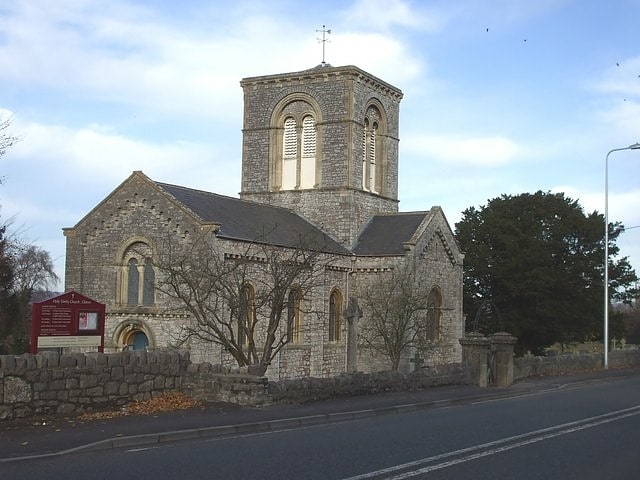
The Church Of Holy Trinity at Cleeve in the English county of Somerset was built in 1840. It is a Grade II* listed building.[1]
St Nicholas' Church

Building in Brockley, England. St Nicholas' Church in Brockley, Somerset, England dates from the 12th century, and is recorded in the National Heritage List for England as a designated Grade II* listed building. The church is a redundant church in the care of the Churches Conservation Trust. It was vested in the Trust on 1 April 1989.
The Norman church has a pinnacled tower which was added in the 15th century, and the whole church was extensively renovated in the 1820s by the Pigott family,. The font is Norman and there is a stone pulpit dating from around 1480. Inside the church is a Royal Coat of Arms dating from 1842 by William Edkins.
The building is used as a local arts venue with service generally being held in the church twice a year, however special permission can be obtained for weddings.[2]
Church of St Michael and All Angels
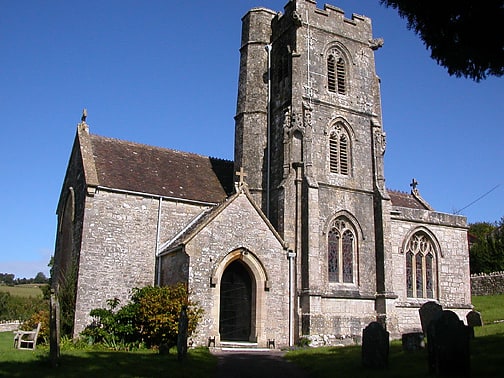
Church in Butcombe, England. The Anglican Church of St Michael and All Angels at Butcombe in the English county of Somerset was built in the 15th century and restored in 1868. It is a Grade II* listed building.[3]
Address: The Batch, BS40 7UX Bristol
Church of St Mary

Building. The Anglican Church of St Mary stands on Knap Hill in Nempnett Thrubwell, Somerset, England dates from the 15th century, but was built on the site of an earlier Norman church. It is a Grade II* listed building,
Before the dissolution of the monasteries the parish belonged to Flaxley Abbey in Gloucestershire. In 1537 the land and manor were granted to Sir William Kingston. The parish register lists christenings, marriages and burials from 1568.
The three stage tower, which contains five bells, has set back buttresses and two arch bell openings with tracery. The tower is crowned by a parapet with blank arcading, and square pinnacles, it also has a slightly higher stair turret. The nave was restored at a cost of £700 in 1864. The late Victorian chancel of 1897 is in the decorated style. Inside the church is a screen attributed to Pugin, although Nikolaus Pevsner is of the opinion the architect is probably Pugin the younger.
The base of a 15th-century cross in the churchyard is listed Grade II.
Wade and Wade in their 1929 book "Somerset" described it as "a small building with a Perp. W. tower, from the W. face of which project two curious and uncanny carved heads of a man and beast. The walls of the nave still bear the original 13th cent. consecration crosses. The chancel is modern, and contains a rich modern screen and a good E. window of Munich glass. Note (1) rude Norm. S. doorway filled with Perp. tracery; (2) Norm. font carved with a curious device by some later craftsman. Near the porch in the churchyard is (1) base of ancient cross; (2) tomb of first rector — Robert — bearing an incised cross".[4]
Fairy Toot

The Fairy Toot is an extensive oval barrow in the civil parish of Nempnett Thrubwell, Somerset, England.
It is an example of the Severn-Cotswold tomb type which consist of precisely-built, long trapezoid earth mounds covering a burial chamber. Because of this they are a type of chambered long barrow.
Fairy Toot was formerly a chambered cairn which is a Scheduled Ancient Monument. Located south-southwest of Howgrove Farm, it is a mound 60 m long, 25 m wide and now 2.5 m high, retained by a stone wall. Its summit is covered with ash trees and shrubs. Formerly it was considerably higher.
On being opened and essentially destroyed between 1787 and 1835 by the Reverend Thomas Bere of Butcombe and the Reverend John Skinner of Camerton, it was found to contain two rows of cells, running from south to north, formed by immense stones set edgeways, and covered by others of larger dimensions. A human skull from the barrow is now in the Bristol Museum and Art Gallery.
At the time it was conjectured to be a work of the Druids, but its origins are far older and probably date from the Neolithic period.
Wade and Wade in their 1929 book "Somerset" described it as "a remarkably fine tumulus of masonry, said to have been one of the finest in Britain, in the chambers of which skeletons have been discovered. A few vestiges of it now only remain, the rest has been used as a lime-kiln."
The site was visited in the past as it was known as a place for curing warts.[5]
Brockley Combe
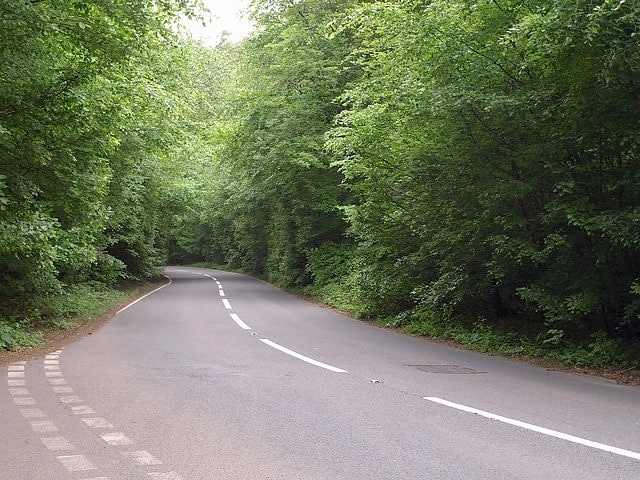
Brockley Combe is a wooded combe near the village of Brockley in North Somerset, England. The combe cuts into the western edge of the Lulsgate Plateau, the Carboniferous limestone hills which form a northern outlier of the Mendips, south west of Bristol.
Bristol International Airport lies at the top of the combe. A minor road runs along the length of the combe, meeting the A370 at the lower end, near the village of Brockley.
The name arises as a very rare co-joining of two Brythonic words; combe meaning 'a small deep dry valley, easily defended', and Brock meaning 'badger'. Combe is spelt differently in other part of the United Kingdom as Coombe and Coomb, but the meanings are the same.
The National Gazetteer of Great Britain and Ireland, published in 1868, describes Brockley Combe as follows: "Near the village, on the south-east, is Brockley Coomb, a deep narrow glen, of singular beauty, sunk between steep rocks, rising at some points to the height of 300 feet. It is adorned with many noble trees, and all the fissures and ledges of the cliffs are enriched with a great variety of mosses and other forms of vegetation. Lead ore is found here, and there are masses of columnar basalt."
Two identically named poems were written about the combe. Brockley Coomb by British Romantic poet Samuel Taylor Coleridge, which is subtitled Lines composed while climbing the left ascent of Brockley Coomb, May 1795; and Brockley Coomb by British poet Arthur Hugh Clough. John Marius Wilson said that Brockley Combe was a "favourite resort of Coleridge".
To the south is another, more undisturbed, combe, Goblin Combe.[6]
King's Wood and Urchin Wood SSSI
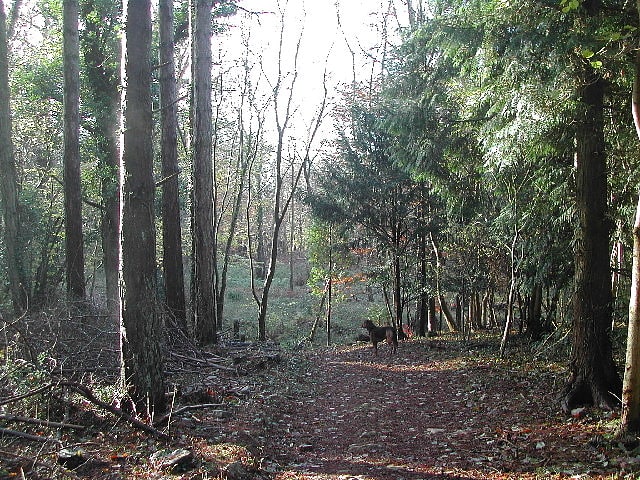
King's Wood and Urchin Wood SSSI is a 128.1 hectare biological Site of Special Scientific Interest near the villages of Cleeve and Congresbury, North Somerset, notified in 1990.
The site has long been renowned for its botanical interest and records date back to the County Flora of 1893. The woodland supports a particularly high diversity of vascular plants, including populations of the nationally rare plant Purple Gromwell (Lithospermum purpurocaeruleum) and the scarce Angular Solomon's seal (Polygonatum odoratum).
Large areas of King's Wood were replanted during the 1960s with beech Fagus sylvatica and a variety of conifer species including Douglas fir (Pseudotsuga menziesii), Lawson's cypress (Chamaecyparis lawsoniana) and Norway spruce (Picea abies). These crop trees have, however, largely been unsuccessful and the replanted areas are now being overtaken by hardwoods.
King's Wood supports nationally important populations of the rare and endangered greater horseshoe bat (Rhinolophus ferrumequinum) and dormice (Muscardinus avellanarius), and a nationally scarce Chrysomelid beetle (Clytra quadripunctata).[7]
Lulsgate Quarry
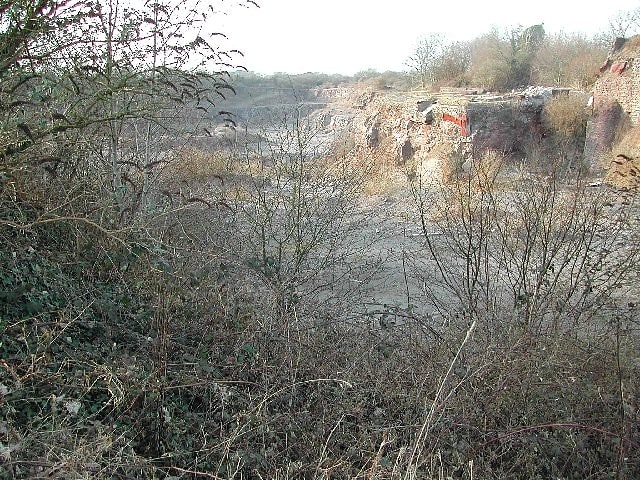
Lulsgate Quarry is a 1.13 hectare geological Site of Special Scientific Interest near the village of Felton, North Somerset, notified in 1997.
The site has an excellent exposure of an irregular unconformity surface lying between inclined Lower Carboniferous (Dinantian) Black Rock limestones and flat-bedded Upper Triassic (Rhaetian) strata.[8]
Plaster's Green Meadows
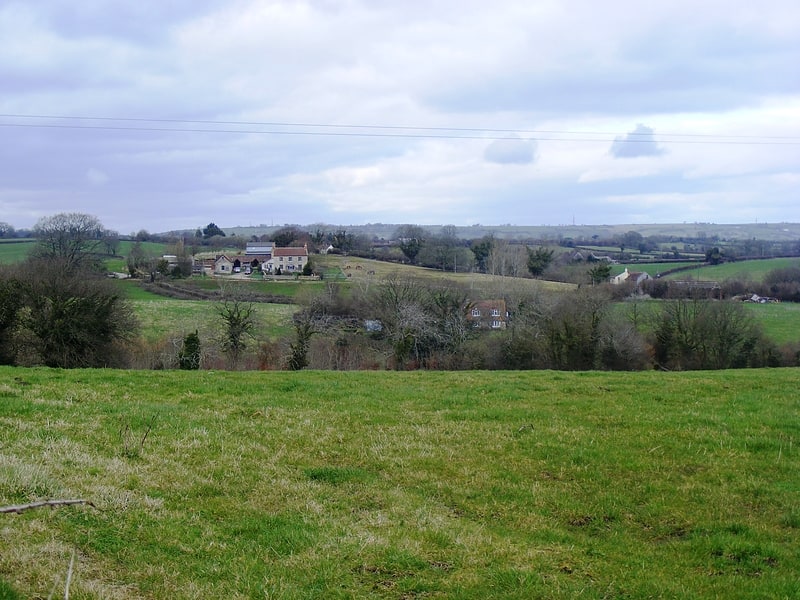
Plaster's Green Meadows is a 4.3 hectare biological Site of Special Scientific Interest near the village of Nempnett Thrubwell, Bath and North East Somerset, notified in 1989.
This is an area of unimproved and traditionally managed species-rich meadows which support a neutral grassland community of a type which is now rare throughout Britain. The site is situated on the slopes fringing the Lias Tablelands and is underlain by Rhaetic clays and, lower down the slope Keuper Red Marl. The slowly permeable clay soils are slightly calcareous in nature and this is reflected in elements of the flora.
The site is characterised by the nationally rare Common Knapweed (Centaurea nigra) and Crested Dog’s-tail (Cynosurus cristatus) and dominant grasses include Sweet Vernal-grass (Anthoxanthum odoratum), Crested Dog’s-tail and Yorkshire Fog (Holcus lanatus), while Quaking Grass (Briza media) and Yellow Oat-grass (Trisetum flavescens) are also frequent.
There is a high component of herb species throughout the meadows including Saw-wort (Serratuta tinctoria), Dyer’s Greenweed (Genista tinctoria), Common Knapweed, Pepper-saxifrage (Silaum silaus), Devil’s-bit Scabious (Succisa pratensis), Betony (Stachys officinalis) and Spiny Restharrow (Ononis spinosa). The calcareous nature of the soil is reflected by the presence of Cowslip (Primula veris), Fairy Flax (Linum catharticum), Glaucous Sedge (Carex flacca), Lady’s Bedstraw (Galium verum) and occasional Salad Burnet (Sanguisorba minor).
The meadows are bounded by hedges supporting numerous species including Hawthorn (Crataegus monogyna), Wych Elm (Ulmus glabra), English Elm (Ulmus procera), Hazel (Corylus avellana) and Field Maple (Acer campestre). Hedgerow trees include Ash (Fraxinus excelsior), Sweet Chestnut (Castanea sativa), Holly (Ilex aquifolium) and Oak (Quercus spp.).[9]